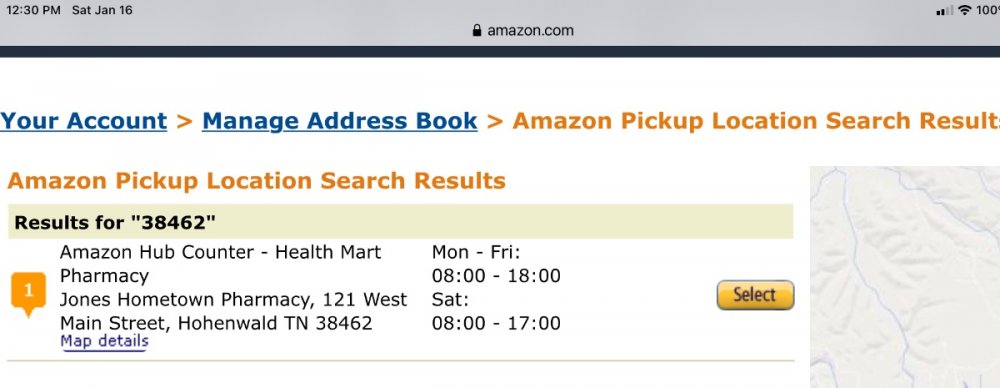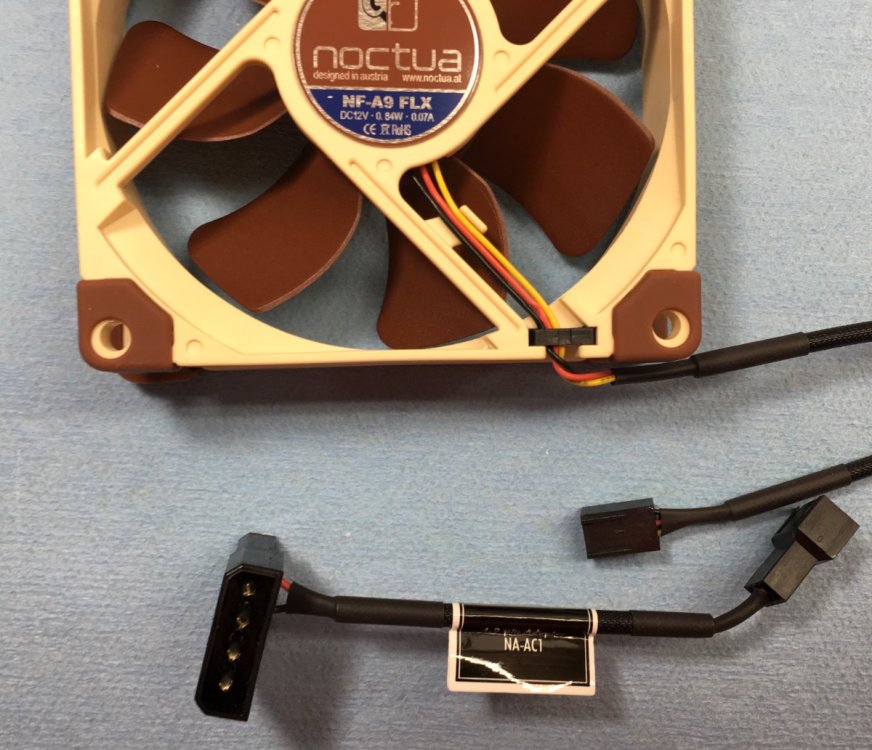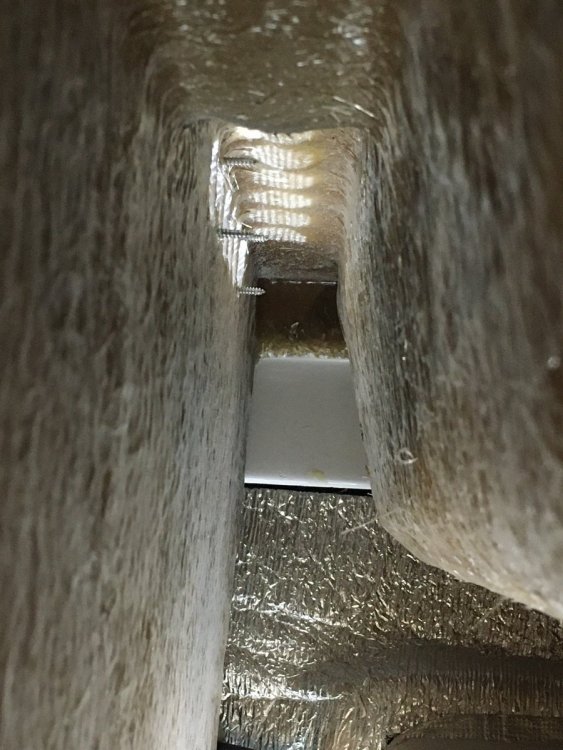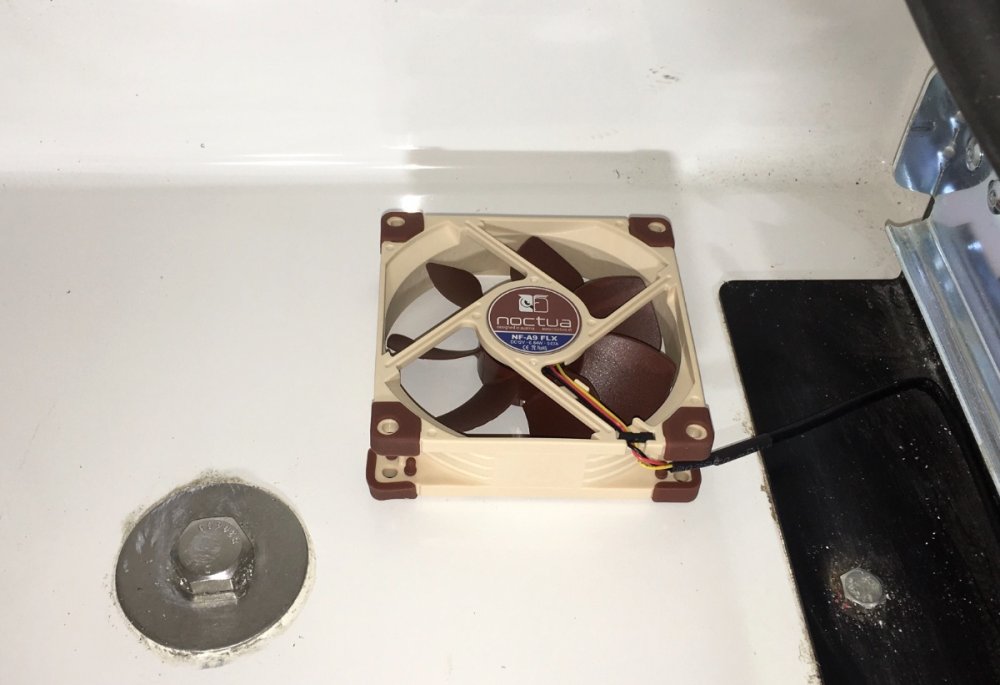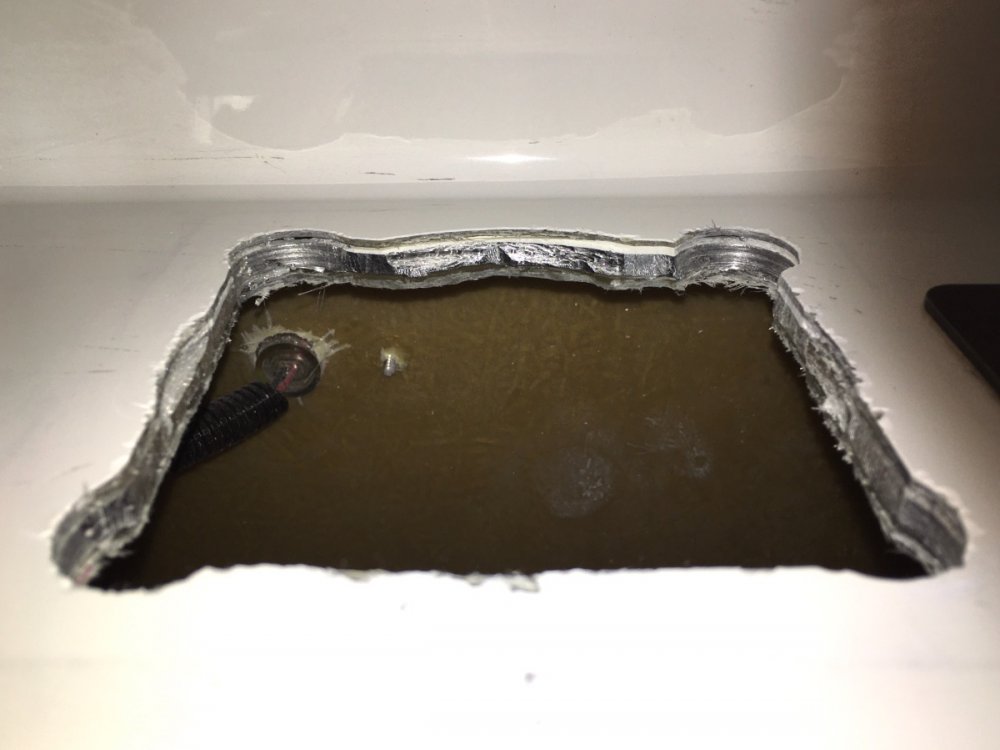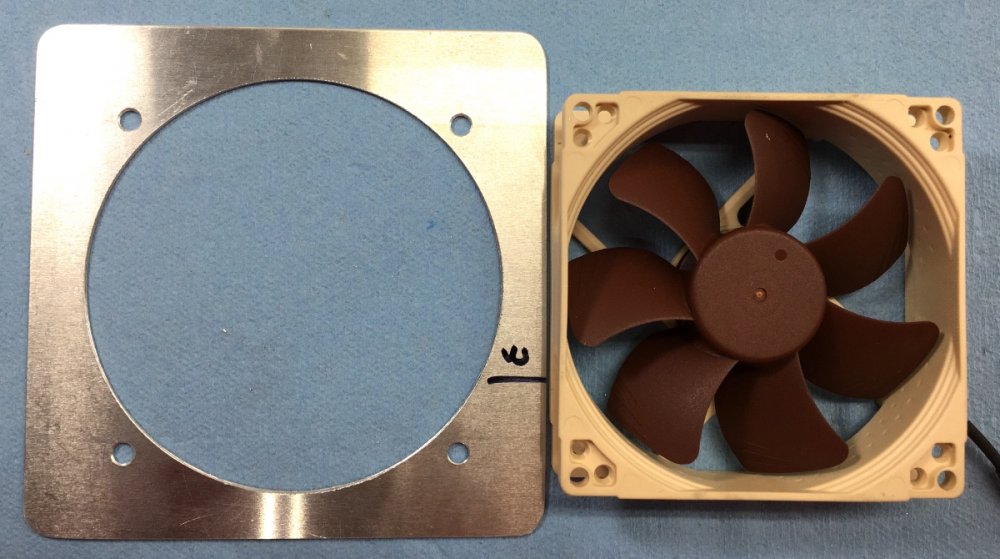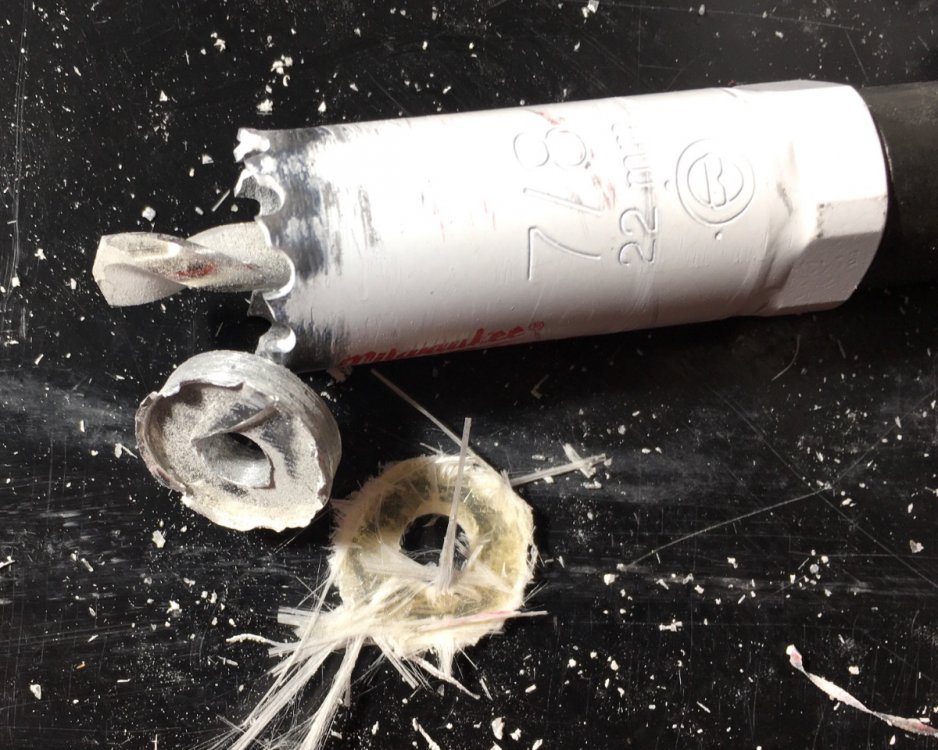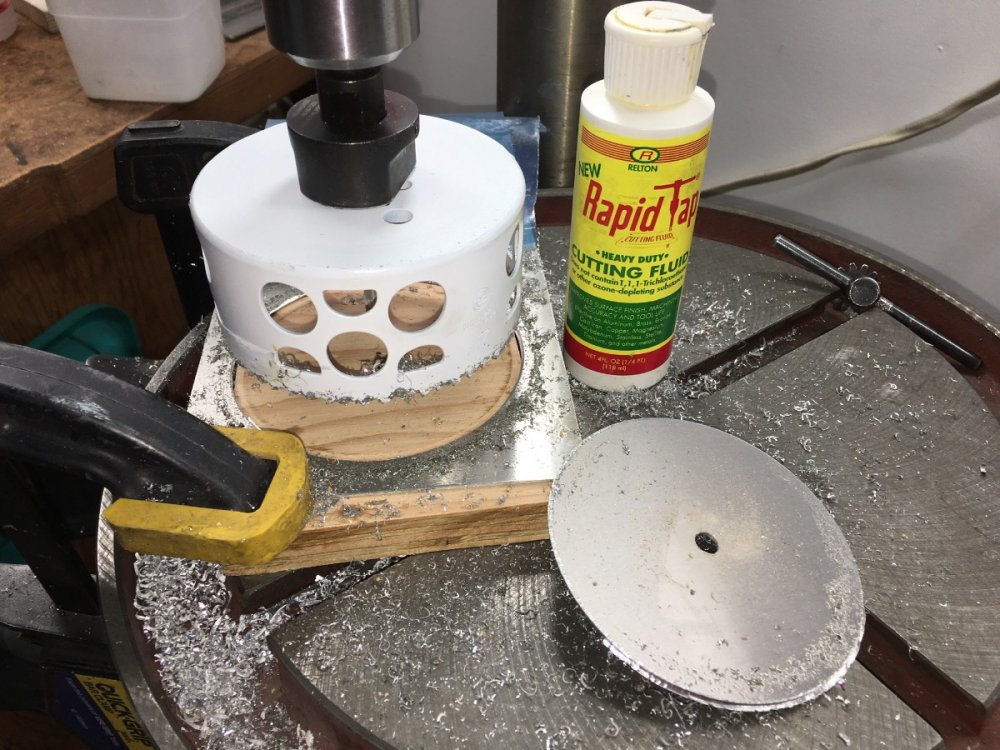-
Posts
5,759 -
Joined
-
Last visited
-
Days Won
243
Everything posted by John E Davies
-
I know zilch about these antennas. I do have the Weboost cell booster in my Ollie and it sort of works, you usually have to put the device on the table right under the antenna. How effective is a good quality hi gain external unit, and could I put one at the top of my 22 foot tall fiberglass flagpole? I don’t want to hijack this thread, maybe open up a new discussion about this? I would kill for a solid cell signal in marginal conditions. I spun this off into a new thread here: ..... https://olivertraveltrailers.com/forums/topic/4915-recommendation-for-an-external-pole-mounted-mimo-cell-antenna-for-plugging-directly-into-a-verizon-jetpack/ Thanks. John Davies Spokane WA
-
Verizon Jetpack..... My wife has one, she uses it as a hot spot for her Macbook Pro when camping with a decent cell signal. She can run her laptop off it, and do a conference call while streaming a presentation from it, while talking on her phone. You canNOT use your phone as a hotspot and simultaneously talk over it. That is as much as I know. Why would I want to use a Jetpack as a Mobile Hotspot instead of my smartphone or tablet? These are reasons to consider using a Jetpack as a Mobile Hotspot instead of your smartphone or tablet: Battery life - A Jetpack has its own battery so won't drain the battery on your smartphone or tablet. Flexibility - If you're sharing your network connection with others, you can leave the Jetpack behind for them to continue using instead of your smartphone or tablet. Convenience - When you have a Jetpack, you can use a phone that's not HD voice-capable at the same time you're using your mobile hotspot. Privacy - If your smartphone is being used as a Mobile Hotspot you have to stay within 30 feet of the devices connected to it. But not if you're using a Jetpack as a Mobile Hotspot. Connect more devices - Most Jetpacks allow you to connect 10-15 Wi-Fi devices, depending on model” https://www.verizon.com/support/verizon-jetpack-faqs/ You can always get one later if you find that you can’t get by with the Pro Package. I think you should send an email to your salesperson asking about manuals. John Davies Spokane WA
-
Ship to an Amazon locker, collect it within three calendar days of notification, if you don’t collect it in time, it gets returned and you get a refund. Amazon Locker FAQ With 900 locations, it seems as if that would not be too painful for a full timer. As long as you are willing to hang out in a given area for several days. FYI here is the Hohenwald locker. John Davies Spokane WA
-
Yes, get a good high quality HARDENED chain and a good lock. That wheel chock you linked to is garbage. The very first review... ”The pin locking mechanism jammed in place and would not retract when the clamp was unlocked. This lock nearly stranded my trailer at our campsite. Fortunately it is also not a very durable lock, and a couple of quick hammer blows were enough to break the pin so I could get going.” If you don’t want the hassle of a heavy chain, which will probably scratch the fine polish of your pretty wheels, consider a Master Python cable lock. You would need to add a red flag of some material so you remember to remove it. The cables used to be available in lengths up to 30 ft, but I don’t see the long ones listed. Here is a 12 footer that would also be excellent for securing lawn chairs, a bike or even a generator. Run the cable through the frame and one wheel, put the lock up on top of the tire where it will be out of the weather. https://www.amazon.com/Master-Lock-Python-Adjustable-8413KACBL-12/dp/B07TSYB3XY I use a 15 foot one all the time. It is not super secure like a hardened chain and a quality lock, but it is certainly good enough. When I have the flag pole mounted in its tube, I run the cable through the hole in the side, to keep somebody from walking away with it and my wind art.😬 John Davies Spokane WA
-
If you have a volt ohm meter it should be very easy to check. if you have a clamp-on (inductive) ammeter like this .... Uni-T B4Q094 UT210E True RMS AC/DC Current Mini Clamp M W Capacitance Tester ... it take all of thirty seconds. and you can use it for testing the electric brakes, or any circuit where you can access a single wire (not a bundle). It is excellent and I highly recommend it. John Davies Spokane WA
-
That is pretty nifty. Did you find a dual receiver that doesn’t limit the tongue weight to 400 pounds? Or do you plan to just ignore the warning sticker? I don’t think your truck will notice, one way or the other. Will the doghouse collide with the rear bike when the trailer is jack-knifed? This could never work on my truck because I have to have clearance to get in back.... but it would be excellent if it clears the Ollie and you have an open bed or a canopy with side access panels, like my dream Go Fast Camper. John Davies Spokane WA
-
In cold weather, the warmer cabin air (from the furnace registers ) will be drawn into the electronics compartments via the lower 4” round holes I am adding (and some warm air will be drawn from under the floor) and then the air is pulled up and through the battery box, and out the top vents just below the pantry. It won’t be a huge airflow, but the fan consumes almost no power (0.07 amps) so it can run 24 hrs with minimal affect on the battery load. The main idea is to get rid of the dead air and replace it constantly with conditioned air from the cabin. It should work. How well, is the big question. I will have a battery temp sensor, so I can tape off the vents, see how it reads, and untape the vents and operate the fan for a few hours. I would expect to see a distinct temp change. And I hope the pantry temp will also be a little better. It and the closet both need airflow. I may add a fan at the closet up high, with holes drilled in the floor right next to the door opening, to get it “moderated”. I have pretty much finished with the venting, I still don’t have the Redarc charger. Soon I hope.. John Davies Spokane WA
-
No, that isn’t exactly accurate. The system isn’t smart in any way. If you are supplying a fixed amount of AC amps via the shore power cord, the system will use up to that amount depending on what appliances are enabled by their circuit breakers being turned on. The owner has to control that. If you exceed the maximum amount for very long the generator will disconnect and flash its angry little red light. You need to keep the fridge and water heater running on propane, not 120 vac, and do not use the air conditioner while other 120 vac stuff is operating. The onboard charger will deliver as much as the batteries can accept, but its DC load is also shared by any other 12 volt items being used. So if every load was turned off, the batteries could get the full 45 amps DC. It’s important to learn how each applaince or load affects the total energy picture. The lithium package has a 60 amp charger built into the inverter, I am not sure how exactly that functions. I personally would not like having these functions combined, in case the unit fails. Some folks have reported issues with it. A separate DC converter makes more sense to me, in terms of reliability and functionality. I hope that helps. There are power usage charts you can study, to get an idea of how much goes where. John Davies Spokane WA
-
The standard (45 amp) onboard charger draws around 7 amps AC. A 1000 watt generator should, maybe, perhaps, might work adequately, but only if you switch off all the other circuit breakers. If you try to use the air conditioner, inverter, fridge or hot water heater it will kick offline. A 2000 watt or bigger will prove to be much more useful. Plus it will let you cool the trailer. If you have the lithium package - it has a more powerful charger - you need a bigger generator than this one. They don’t seem to publish the actual specifications. Does it provide 1000 watts continuously? Many brands have a surge rating that is the one they choose to advertise, with a lower continuous rating. My Yamaha 2300 is rated 2300 continuous, but actually surges much higher without issues. It will happily provide nearly 20 amps all day. Alp brags about the light weight but a Honda EU1000i is only about 10 pounds heavier, full of gas. It will run for 8 hours, so if it is just for an emergency, you don’t have to carry any extra gas for it. My personal feelings about gas vs propane: I like gas since if I run out of propane I am not totally screwed for auxiliary power. And I could run a small space heater off it if the furnace failed, or if the Ollie’s propane ran out. And the 10 extra gallons of gas are available to put into the truck’s too small fuel tank if it runs out, or if I am far from a gas station camping and I want to top it off to go exploring. I really like to have lots of options when boondocking. John Davies Spokane WA
-
That is really cool. But IMHO it is a “Steal Me” sign. You make it really easy for somebody to drive away with your trailer. Or just take the hitch.... . That kind of pin lock is very easily defeated with a portable power tool, or the tumblers picked. OTH I sometimes put my Andersen (with the long Stone Stomper bars bolted to it) in the rear cargo basket with a Python cable lock through it. So maybe I should not be the one to cast stones. 🙄 But I absolutely can’t store it in the back of my Land Cruiser. If I had a pickup it would go in the bed, out of sight. Will your hitch fit in a milk crate if the pins are removed? John Davies Spokane WA .
-
Not to throw any more fuel on your “worry fire”, but you also need to be thinking about how to make your Ram look less tempting to a casual smash and grab thief. That is probably a good subject for a new thread, but basically try not to leave anything unusual or valuable exposed. At the very least, a dark blanket over the top of loose gear is a good start. Heavy window tint is good, but I don’t like that method. Removing the rear seats entirely and installing secure storage lockers is much better but big $. You can go crazy with window anti-theft film and extra door locks ... https://expeditionportal.com/forum/threads/recommended-overland-hardware-lock-hasps.15697/ ... but that is more appropriate for visiting Third World areas. In reality you are most likely to find a stranger hanging around waiting for your return, so he can beg you to let him look inside your cool trailer..... Get used to that. John Davies Spokane WA
-
1 is fine, as long as it fits into your receiver OK. Try it now to make sure. 2 is extra fine, but you need a better lock for it. Your storage unit lock is probably junk. This one is very good, not the best but a hell of a lot of lock for the money. .... Stanley high security padlock ... I have been using one for four seasons and it is most excellent. 3 isn't that just like number 1? 4 no, you don’t need that. If you are super concerned about somebody lowering the coupler onto a smaller ball and driving away, buy a hardened 2” steel ball bearing ($10) and lock it into the coupler opening using the coupler lock you already have. But that really isn’t necessary unless you leave it unattended in Detroit or Chicago... Buy the better padlock and call it good. John Davies Spokane WA
-
Interesting test, but I suspect your results may be due to your choice of fan. 400 cfm is a whole lot of air. My medium Vornado portable is about 300 cfm. Their large model for a 100 ft wide room is 500. In summer that might work great for making a breeze in the cabin, but for heating, a low flow will work better. Can you repeat your experiment with a much much smaller fan running all day? I don’t know enough about the physics to be able to predict the results, but I do know that plastic (your water lines and tanks) is a really poor heat conductor. Blowing high velocity air across them for a short time will not do much to raise their temperature. Here is an interesting article. https://sciencing.com/drink-metal-can-plastic-bottle-5518851.html Your water filled fresh tank is a VAST reservoir of heat. It takes a long time to adjust its temperature, and it tends to hold onto that heat. I wonder if an in-tank electric water heater could help with maintaining the under floor temp in winter. A regular RV tank heating pad located under the tank would do the same, but the Ollie design doesn’t allow for that. An automotive engine block heater with built in circulator pump would probably be excellent, if you could find one that worked at a lower temperature. Most car units run hot enough to damage pex tubing. An Alde hydronic heating system would be 100% perfect for this! Just add a little radiator coil wherever it is needed. Unfortunately you can’t buy a kit, it is for OEM builders only. I did check😢 I would love to be able to retrofit one in my Ollie. With the double wall hull it should work magnificently (and completely silently), but you would have to drill a whole bunch of holes for air circulation. I am pretty sure that heating the water inside the fresh tank to say 40 degrees F would work, but engineering a safe, reliable, affordable system may be a real hassle. Try the small fan, running all day, to see if that might work OK. The computer fan I am mounting under the batteries is 35 cfm (12 vdc, 70 milliamps) and I will probably just let it run all the time when it is needed. It comes with two inline resistor cables to drop rpm if needed. Good luck. John Davies Spokane WA
-
OK, what are your concerns about the DMI receiver on your truck? I would expect it to be fine, it is overkill for your LE2, that is all. Is it intended to dampen banging and crashing while dragging equipment over rough terrain? I don’t know anything about it, but it does look interesting. John Davies Spokane WA
-
Welcome to the forum. Where do you live? Where do you plan to camp? What truck? We need dog pictures. 😉 If you can’t easily find shade on blistering hot days, you should not pick the lithium battery option, those very expensive batteries can be damaged by long term exposure to excessive heat. Buy the AGMs, or if you are OK with the hassle of maintaining them monthly, the regular “wet” lead acid batteries. John Davies Spokane WA
-
I don’t have any specific suggestions, but this might help you get started. Good luck. https://olivertraveltrailers.com/forums/topic/3248-how-to-service-your-furnace/ John Davies Spokane WA
-

Is the Andersen Hitch necessary on an Elite I?
John E Davies replied to Carl Hansen's topic in Towing an Oliver
Carl, if maintained forest roads is your goal, just try a dead weight ball mount. I suspect it will be perfect, but if not you can easily add an Andersen later. I recommend against buying one from the start because I really think it would be a waste of money and a handicap too. Plus they are a PITA to deal with on a regular basis - hooking up can be very trying sometimes. I like your base camp plan, that is why I have a Land Cruiser and not something a little better suited to towing down highways. I like to drive into the back country, park the Ollie, and then explore in comfort and safety. John Davies Spokane WA -

Battery box floor is laminated 1/8” aluminum plate!
John E Davies replied to John E Davies's topic in Ollie Modifications
I really doubt that any parts other than the weight supporting floor are so very robust. I have already drilled some holes in the sides, which are 1/8” blown chopped fiber fiberglass (not honeycomb or hand laid) and they super easy to drill with a bi-metal hole saw. I haven’t drilled the top but I don’t know why they would put metal there. All the load is in the bottom, going straight down to the trailer frame, via the central support. I will find out about the top because I will drill air holes there soon... You could easily put a fan in the aft side wall, close to the bottom, centered. There is around 3” of space between it and the bed wall, and nothing in the way. It will cool or warm the batteries just as well. I wanted a central floor location so it would also be effective at cooling the front electronics bay (with an added air vent there). A rear located fan will still do that, but maybe not quite as much. Here is a view looking up at my new top rear air vent. The pantry is on the right top. The battery box is on the right bottom. The top of the battery box is separated from the bottom of the pantry by about 4” of space all the way across! Again, I had no idea! Why such a huge gap? I would rather have the secret compartment be much deeper to take advantage of that big hidden volume. This has been a big learning experience for me. I will be posting threads when I get everything done. John Davies Spokane WA -
I had no idea, I am highly impressed. I was starting to install a computer fan below the floor for moderating temperature fluctuations. I was really shocked when I hit metal.... 😳 My one hour job turned into four. I was using a 4” hole saw and 3/4 of the way through my Dewalt drill gears blew up. I finished with an electric scroll saw and a hacksaw blade in a straight handle. Then I went full analog and got out my 20,000 rpm air die grinder. Ugly..... fortunately it will all be hidden. I want to keep moisture away from the laminations, so I wil seal all that with epoxy before mounting the fan with an aluminum plate. Which I also made today.... I am beat. I ordered a new drill too. John Davies Spokane WA
-
Hi Fred, welcome. Maybe you should clarify, what year truck? Does it not already have a factory receiver? Which Ollie did you buy? with either model you do not need an exotic receiver like that Quick and Easy one. A plain receiver and a simple dead weight ball mount works great with a HD truck and either Ollie. John Davies Spokane WA
-
I think this could be a very cool solution (pun intended) for when you are on shore power. I actually don’t think it needs to be inside a furnace duct at all. The spaces under the floor are all essentially tied together by the huge gaps at the front and rear of the water tanks. You already have a great big air inlet at the curb side, for the furnace air. How about this....? Mount your fan under the front dinette seat, if you can tolerate a loss of storage, or alternately under the rear one (use plastic ductwork because of the high voltage there). Leave its intake wide open and duct the outlet air into the cabin through a 4” hole cutout. Put your space heater on the floor in the middle, facing backwards. Warm air will tend to pool near the back and will get sucked into the furnace grill. It will then flow all around the basement, through your new fan and out the front grill. No dampers needed. It might be fine with the furnace running (the suction could disrupt air entering the furnace box), but OTH I don’t think it would at all be needed when you are heating with propane. In summer it will suck out the hot air from under the floor and cabinets and provide some extra cabin air circulation, as you commented. I do think you should add holes in your battery box for the lithium battery area to ventilate. It consists of two closed and nested cubes and traps heat if the door vents are sealed. I don’t think you need nearly as much as 160 cfm for heating, but in summer it would provide a nice blast of air. Research “bilge blower” in some power boat forums for some ideas, that is what essentially you are building. Look at 4” marine blower fans, I am not sure what is available in 120 volts AC, maybe there are some. Good luck. John Davies Spokane WA
-

Hello from Colorado! Just got our new (to us) Elite II
John E Davies replied to tallmandan's topic in Introduce Yourself
Welcome to the family. Don't forget your own backyard - CO National Monument and Dinosaur NM are two of my most favorite spots, but you need to be comfortable boondocking. Both are best visited in the shoulder seasons. John Davies Spokane WA -

Four (easy) questions about truck Payload for Elite II?
John E Davies replied to david shiffman's topic in Towing an Oliver
Welcome to the forum. LE2 tongue weight is almost always higher than as specified in the brochure, that is for a completely stripped model. Typical TW is probably around 650 pounds, depending on your options (batteries especially) and how much cargo you put up front or on the back. For the LE2 many folks can easily get by with a 1500, but they have to always watch out for overloading. This includes any accessories you add like canopy, bigger tires, offroad armor, etc etc. or oversized tires that affect gearing. Plus you have to add the weight of the hitch itself. An Andersen WD hitch is about 60 pounds. On a bigger truck that is not needed, a simple dead weight ball mount is fine. Owners with HD trucks simply do not have to worry about payload, unless they also carry ATVs or a whole lot of ammo.... 😉 All your questions have been discussed many, many times, have you looked through the Towing section? John Davies Spokane WA




